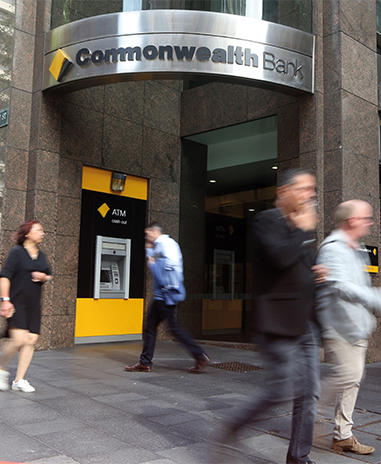Maintaining strong asset quality during 2020 has been a Herculean feat. Even the most highly capitalised banks in Asia — some of the biggest in the world by Tier 1 capital — have felt the pinch thanks to the economic slowdown predicated on the Covid-19 pandemic.
This impact has hit like a sledgehammer. In a note published in July 2020, Standard & Poor’s (S&P) estimated $2.7tn of economic output will be lost across Asia in 2020 and 2021 as a result of the pandemic. The ratings agency does not predict to see gross domestic product trends normalise until 2023 at the earliest. The note also cautioned “a more severe or prolonged hit to the economies than our current baseline would almost certainly push banks’ credit losses higher, drive their earnings lower, and amplify other risks. High private sector indebtedness and still high asset prices in many countries may have also set up some countries for a disorderly correction.”
But looking specifically at asset quality, a slightly different story is emerging. During April 2020, S&P predicted that Asia’s non-performing loans (NPLs) could rise by $600bn and resulting credit losses could increase by $300bn during the course of the year as a result of the combined shock of Covid-19, oil price declines and market volatility.
The reality, at least superficially, does not seem to be as bad as anticipated. Alicia García-Herrero, chief economist for Asia-Pacific at Natixis, says: “The recent data seems to show the situation is better than that, probably due to the massive liquidity injection, fiscal stimulus and regulatory forbearance. But the question is: how long can the slow rise in NPLs be maintained?”
A turbulent year
Asia’s banking sector has experienced a heterogeneous response to the Covid-19 crisis. Much of the impact on the banks has been a result of how well each country has responded to the public health emergency, as well as how quickly they have been able to open up their economies again as the year progressed. And arguably, as the region to be first hit by the outbreak, it has had a head start on recovering from the fallout from the pandemic.
As the region moves forward, the focus is on individual market recovery. Gavin Gunning, lead analyst, global and Asia-Pacific financial institutions ratings at S&P, says India is the market with the most challenges to overcome, as it was already facing issues around NPLs even prior to the start of the pandemic. In June 2020 S&P forecasted that India’s NPLs could spike to 14% by the year ending March 2021.
Meanwhile, Mr Gunning says that although China, Singapore, Hong Kong and South Korea are likely to be in the strongest position for recovery, they are unlikely to see a return to pre-Covid levels before the end of 2022.
Shielded from the worst
There is a common theme of strong regulatory response among the best positioned countries. The central banks and regulators have largely stepped in early and effectively to provide buffers against a sudden impact of delinquent debt.
Andrew Gilder, Asia-Pacific banking and capital markets leader at EY, warns: “There are considerable government stimulus and moratoria in place, so banks don’t know if someone isn’t paying due to a moratorium, or because they don’t have the capacity to pay.”
Among the countries with comprehensive packages is Australia, which saw the Reserve Bank of Australia introduce measures such as cutting interest rates to 0.25% and a three-year funding facility of $150bn in cheap credit for banks to extend to businesses.
However, Mr Gilder says is likely to see a hit from the end of government stimulus packages in the fourth quarter of 2020, or through to the first and second quarters of 2021. He also notes there has been some caution from the banks despite being well capitalised, such as with Westpac cancelling its interim dividend payment.
The question is: how long can the slow rise in NPLs be maintained?
Some argue that the situation is not as dire as one is led to believe. Daniel Tabbush, an Asia bank analyst writing for Smartkarma, says: “Commonwealth Bank of Australia announced that its deferral loan balance, comprising loans where interest, principal or both are deferred, has declined from A$67bn ($48bn) at the end of June to A$42bn at end September. That is a big decline of A$25bn. This is down to debtors moving back to normal loan terms, and not seeking to increase or maintain deferred loans or payment holidays.”
Malaysia, meanwhile, has seen a slight increase in the NPL ratio to 1.6%, with stimulus measures of $73.2bn introduced over the course of 2020. While the moratorium has ended, terms have been extended to help people who have lost their jobs. But it is unlikely other countries will follow Malaysia’s lead.
Mr Gilder says: “I doubt we will see many moratoria being extended. The Malaysia example is fairly unique. It is not possible to postpone the issues indefinitely, and banks will need to react to their borrowers being in trouble.” He adds that as a result, banks in the region are raising provisions in anticipation of an uptick in defaults.
Some countries, however, are already feeling the pinch. The Philippines has struggled with the coronavirus and is the worst hit among the Association of South-east Asian Nations member countries, with 352,000 confirmed cases at the time of writing. This has contributed to the country seeing bad loans hit 2.67% during July 2020 — the highest level in six years.
Views differ on the health of the largest markets. Jonathan Cornish, head of bank ratings, Asia-Pacific at Fitch, says China’s reported 2% NPL rate “understates the magnitude of issues on asset quality the banks face”.
China’s figures may also have been helped by the restructuring of its debt. Mr Tabbush says: “The composition of core capital in China has changed in the past six months. There’s a lot more hybrid capital than common equity.”
How NPLs are managed in China has also had an impact on the reported figures. Ms García-Herrero says: “Banks have been using the opportunity to write off loans and transfer NPLs to asset management subsidies. In other words, as has happened in the past, asset quality in Chinese banks has not deteriorated further thanks to the regulator allowing for credit risk to be shifted around. Given that asset management companies — some of which are created by banks themselves — do not consolidate, this practice is actually helping Chinese banks understate their true level of NPLs.”
Building the buffers
The regulatory requirements for significant capital buffers have also helped with holding off the worst case scenario. Under the Basel III requirements, a bank’s Tier 1 and Tier 2 minimum capital adequacy ratio, including the capital conservation buffer, should have been at least 10.5% of the bank’s risk-weighted assets in 2020.
While meeting the requirements of international regulations have helped the more developed markets, not all of Asia is enjoying the same financial padding.
Mr Cornish says: “Some banks are only moving towards the Basel II capital requirements, and so are currently in a position of fairly modest capital levels. There are also those which are recovering from past crises, such as in India, where the previous NPL crisis has caused significant erosion of their capital bases, and made them less able to lend to support the real economy.”
And some countries may be building up issues that will take time to resolve. He says: “Vietnam has structurally weak capitalisation, and banks have been limited in their ability to maintain high rates of credit growth and don’t have a lot of headroom. Moving from Basel I to Basel II has exacerbated the challenges. I think this will continue for several years to come.”
But even the largest economies cannot guarantee that this will save them from further shocks. “China has set the countercyclical capital buffer to zero for the upcoming Basel III implementation,” Ms García-Herrero says. “S&P has mentioned China’s biggest banks will face a $940bn capital shortage by 2024. In other words, China is pushing the can further away as regards to countercyclical capital but, quite frankly, I would not blame China since it makes no sense to introduce additional capital charges in the midst of a pandemic.”
Mr Gunning adds that if banks find they have to utilise these funds, it would not be detrimental in the short term in the eyes of the ratings agencies: “If banks dip into their regulatory capital buffers, this is not something that would necessarily prompt an automatic rating action. We would need to understand why it is happening, the recovery measures, and whether the minimum regulatory capital requirements are maintained. Many of the buffers were built to deal with exactly this type of situation. We expect risk-adjusted capital across the global banking sector to dip this year, but so far capital levels are holding up well.”
Banks taking action
As the pandemic continues, the initial support offered by the central banks has inevitably started to wane and their advice to banks has changed.
“Early on, the regulators were more active, giving advice on how to interpret IFRS-9 and credit provisioning standards,” Mr Gilder says. “They didn’t want banks to make big provisions; they wanted them to continue to extend credit. Then we saw them become more conservative and, in some markets, advise against paying dividends.” The Monetary Authority of Singapore is among those that took this line of action. In July 2020, it called for local banks to cap their total dividends per share (DPS) for 2020 at 60% of 2019’s DPS level, and offered shareholders payments in scrip in lieu of cash.
Like Singapore, China is also exhibiting caution. “China’s regional banks are preparing for an increase in NPLs, and so are raising lots of provisions,” Mr Gilder adds. “That’s what’s driving some of the conservatism around capital, such as the payment of dividends. They’re trying to retain the capital. There’s a nervousness around when the losses are going to crystallise.”
As a result, banks are building up their capital buffers again across the region, especially those without the benefit of being classified as systemically important. However, Mr Tabbush believes bank provisioning will likely be very low through to the end of 2020, as banks had “over-provided” during the first half of the year.
“It is possible that banks’ provisioning will remain relatively high during 2021, but not like numbers seen during the first and second quarters of 2020,” he explains. “Instead of expensing 20 basis points (bps) of loans maybe they’ll be expensing 30 bps, rather than 100bps. The big caveat to this is interest rates are close to zero in many places. This could prompt some good volume increases that could help banks.”
Because of this, he thinks credit costs could be very low, while adding that it is only during 2021 that credit costs may move to be higher than normal, reflecting rises in unemployment levels and the number of distressed companies.
Where to from here?
As the region moves through the final quarter of 2020 and into 2021, the question is how the worst-affected banks will be able to rebuild their capital levels with depleted buffers and rising NPLs.
The outcome may be to look for alternative funding sources. Mr Cornish says: “In terms of resolution, we don’t see there being any significant change in India, unless there are decisive steps and an injection of capital from the state. Thus far, the move has been to allow banks to raise capital from the private sector. But the current environment is not conducive for private sector investments to be made into the state banks.”
Another possibility is for some banks in badly hit countries to turn to foreign investors or lean on foreign parent banks. Mr Cornish adds: “There is scope for Vietnam, for example, to raise funds from foreign ownership, which would give the banks more opportunity to increase capital and weather any volatility.”
Even if economic recovery does come about, the landscape that banks operate in may look very different from before. “While a sustainable economic recovery may hinge on a vaccine being found and widely distributed, there is uncertainty on what the new environment will look like for banks post-Covid,” says Mr Gunning. “How will consumers and corporate behaviours change? Banks will have to adapt to the new environment.”
















